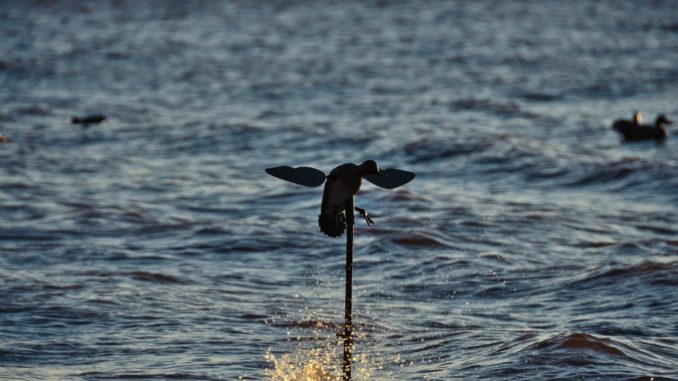
Make sure your decoy spread includes several spinning-wing models when January arrives.
With the final days of the season blowing in, nothing will stop a diehard duck hunter from hunkering down in a reed-covered blind for a mixed bag of goodies. By January, the final push of ducks has arrived in North Carolina, and most of the surviving flock has practically earned a college degree in hunter avoidance, but hunters can keep the feathered fowl nose-diving into their decoys by keeping the plastic flock looking alive and tempting as ever.
Ducks monitor their surroundings for any sign of predators from the time they hatch in the prairie pothole region along their entire migration. In order for them to reach maturity and propagate, strong survival instincts are a critical life skill. Ducks are not greatly threatened during the summer on their breeding grounds, but as soon as they leave their comfort zone and head south on their 1,500-mile trek, the risk of death is serious.
On the Atlantic flyway alone, more than 2 million ducks are annually killed by hunters. Natural predation takes its share as well, so in order to survive, ducks must be alert and learn to avoid dangerous situations to live through the winter. That’s made more difficult because freezing temperatures take their toll on ducks, which must constantly find high-energy foods; that contributes to their vulnerability to hunter harvest.
The chief reason birds survive is they will instinctively travel and congregate together — safety in numbers. And as the end of the season nears, ducks become weary and will raft up in large flocks in open waters.
In order for hunters to attract the attention of an incoming group of ducks, a reasonably large fake flock needs to be available to create the illusion of security. But what is considered a large flock?
For Jonathan Oglesby of Eastern OBX Guide Service, a big decoy spread is the only way to get ducks’ attention in the open Pamlico Sound waters he hunts.
“We add more decoys later in the season and will use as many as 250 decoys at one time,” said Oglesby (910-990-5674). “When you see groups of 2,000 to 3,000 redheads at one time, you need more than three-dozen decoys to turn them towards you.”
A lively set of decoys is also important to gain the attention of ducks approaching from a great distance. In a perfect situation, every decoy would swim around, duck its head and flap its wings on command. But having all your decoys swimming, flapping and dunking at the same time is just not realistic.
For Oglesby, a good, steady wind greater than 20 miles per hour — common on the Pamlico and Albemarle sounds — will blow his decoys around just enough to dupe even the most-sensitive ducks overhead. However, there are those times when nature’s fury is contained that makes a spread of decoys look like a bunch of plastic bottles. In those cases, Oglesby prefers to add motion to his spread to attract ducks.
“I like to create motion in the decoys in the late season when the wind is blowing any less than 20 miles per hour,” he said. “The added action will help give life to your spread.”
Oglesby’s favorite motion devices are the motorized spinning and flapping decoys.
“Ducks can make out that white wing flapping a long way away. You need something to catch their eye 500 to 600 yards away,” he said.
The Pamlico Sound attracts just about every species of duck traveling along the Atlantic flyway, and fortunately, the white flashing from spinning-wing decoys can imitate the wing action of all of them. Even so, Oglesby will use hen versions or buy the mallard spinners and paint them brown to look like a hen duck of any species.
When trying to turn ducks at a considerable distance away, multiple spinning decoys will help add life to the decoy spread. Oglesby will use a minimum of two but more often will have four.
“I like to use two floating and two standing, and I will always make sure to use four on calm days,” he says.
Oglesby places his motion decoys in strategic places around his spread depending on what types of ducks he is trying to attract. He places his spinners in his diver sets differently than in his puddle duck flock.
“I put the standing spinners at the head of my spread for divers, because divers always land at the head of the spread. And I will put the smaller, floating spinners inside the diver spread because the divers are always trading off inside the spread towards the front. It just looks more realistic that way,” he said.
For puddle ducks, Oglesby will place the spinners on the inside of the landing area or at the back of the head, as he calls it.
As the season wears on and more of their feathered friends end up in a gumbo, ducks will look for safe places to feed and rest. And big flocks are the place they will feel the most security. In order to make the big flocks of decoys bring them in from afar, adding life and realism will improve the chances of a quick bag limit.

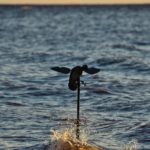
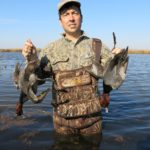
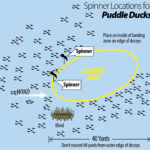
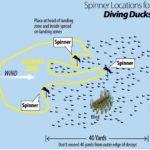



Be the first to comment